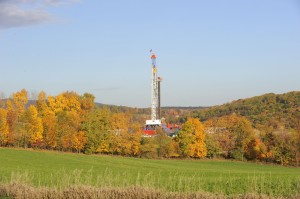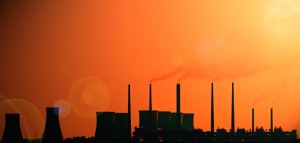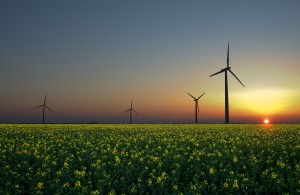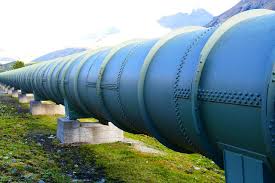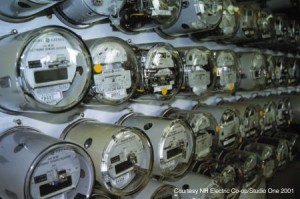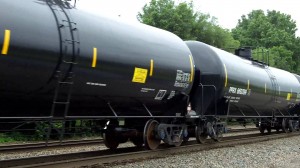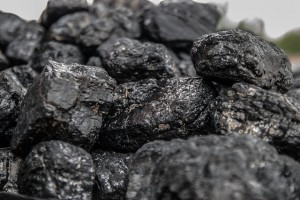587 item(s) were returned.
On March 20th, following a lengthy public review process, Secretary of Interior Sally Jewell unveiled new federal regulations for hydraulic fracturing on federal lands. According to the Department of Interior, these new standards are designed to (1) improve safety, (2) protect groundwater by updating requirements for well-bore integrity, (3) ensure wastewater is disposed of properly and (4) require public disclosure by companies of chemicals. The regulations will go into effect on June 24th, 2015. The fracking boom put the U.S. on track to be a leading producer of oil and gas, yet most of the production has taken place on… [more]
View InsightExecutive Director
Environmental and Energy Study Institute
According to the EPA, its proposed Clean Power Plan (CPP) would lead to a 30 percent cut in carbon emissions from the power sector by 2030, compared to 2005 levels. The CPP sets a customized goal for each state, which takes into account its existing policies and the unique structure of its energy system. The current draft regulation gives states interim goals for 2020-29, and a final target for 2030. The EPA proposal offers a great deal of flexibility for states to choose how best to achieve these emissions reduction goals. The CPP suggests four “building blocks” that states can… [more]
View InsightChief Strategy Officer and SVP for Policy
American Council On Renewable Energy (ACORE)
In lieu of consistent energy policy at the federal level, businesses and power providers are increasingly looking to state legislatures for the right signals to invest in energy. The result? States are stepping up, leading to an increase in renewable energy use, particularly by some of America’s largest companies. A quick scroll through the weekly headlines reminds us that the demand for investing in renewables today is strong – and getting stronger. Google, Walmart, GM, Lockheed Martin, Amazon and Apple all have recently shifted millions in private funding into the clean energy sector. These moves are motivated by increased revenue… [more]
View InsightEconomist
Environmental Defense Fund
Throughout most of the country, residential electricity customers pay the same price for electricity regardless of when it is consumed. Such flat rates mask the fact that true system costs vary over time according to electricity demand. Prices that better reflect the time-varying costs of producing and delivering electricity can lead to a number of economic and environmental gains, such as reduced wholesale prices, increased investment in clean distributed energy resources, and lower overall carbon emissions. Time-variant electricity pricing gives customers greater control over their electricity bills, since they can use electricity when it is cheaper and cut back when… [more]
View InsightAssistant Professor
American University
On February 10, the National Academy of Sciences (NAS) released two major new reports on climate engineering (or “geoengineering”). The reports set out to summarize the scientific basis for what the authors chose to call “climate intervention,” identify governance and ethical challenges, and chart a new research agenda. While the authors were careful to state that climate intervention is no substitute for reduction in carbon dioxide emissions, the reports indicate support for further investigation into large-scale technological responses. The paired studies assess two specific groups of strategies: (1) carbon dioxide removal and (2) reflecting sunlight, or albedo modification. While the… [more]
View InsightThe David R. Atkinson Professor of Ecology & Environmental Biology
Cornell University
The EPA recently announced new regulations for methane emissions, taking an important first step in reducing the impact of this highly potent greenhouse gas (GHG). But the rule falls short, in part because EPA has systematically underestimated methane emissions from the oil and gas industry. Emissions from conventional natural gas are likely to be at least 2- to 3-fold greater than the EPA estimates, according to several recent studies. Recent literature also suggests emissions from shale gas may be twice as much greater still, based on an observed large increase in methane in the atmosphere over recent years, with the… [more]
View InsightOn February 24th, President Obama vetoed legislation that would have authorized construction of the Keystone XL Pipeline as it “conflicts with established executive branch procedures and cuts short thorough consideration of issues that could bear on our national interest.” It is still possible that President Obama will approve construction of the highly controversial pipeline. In fact, a number of outcomes for the executive review are still possible and a district court judge in York County, Nebraska, just granted local landowners a preliminary injunction against TransCanada’s use of eminent domain for the proposed pipeline in a move that further complicates the… [more]
View InsightSenior Scientist
UFA Ventures, Inc.
Generally, when electricity demand rises in an area, we just fire up some source like a gas plant or a coal plant, or put more water through a hydroelectric dam, to produce more electricity to meet that demand. But what about other users voluntarily shifting their use to compensate for that rise in demand? This concept of Demand Response sounds simple, but until recent technological developments, like a smarter grid and rapid energy communication and control systems, it wasn’t feasible since the response time needed to be in minutes, not hours. Some users can shift their energy usage to different… [more]
View InsightThe rapid increase in U.S. oil production has had a number of impacts. One of these is that shipping of crude oil by rail has increased more than 400% since 2005, due to pipeline limitations and the sheer pace of development. On Monday, a train carrying 109 oil cars derailed in West Virginia and 20 of the oil cars exploded. Other recent, high profile accidents have rekindled the discussion about the safety of transporting oil-by-rail that began after a derailment in Quebec in July, 2013 killed 47 people. In July 2014, the Department of Transportation issued a new rule proposal… [more]
View InsightEditor
Bloomberg's First Word Energy
Coal can’t get much love. Cheap natural gas and a bevy of EPA regulations are conspiring to force old coal plants to close and pushing U.S. production down to less than one billion short tons, near a two-decade low. While low-cost production in Wyoming and Illinois has been able to hold steady, the legacy mines of Appalachia face devastating losses in production and jobs. Meanwhile, projects that were supposed to demonstrate a future for coal in a carbon-constrained world are struggling or dead. The Obama administration pulled the plug on the FutureGen clean coal project this month. Another similar project… [more]
View Insight